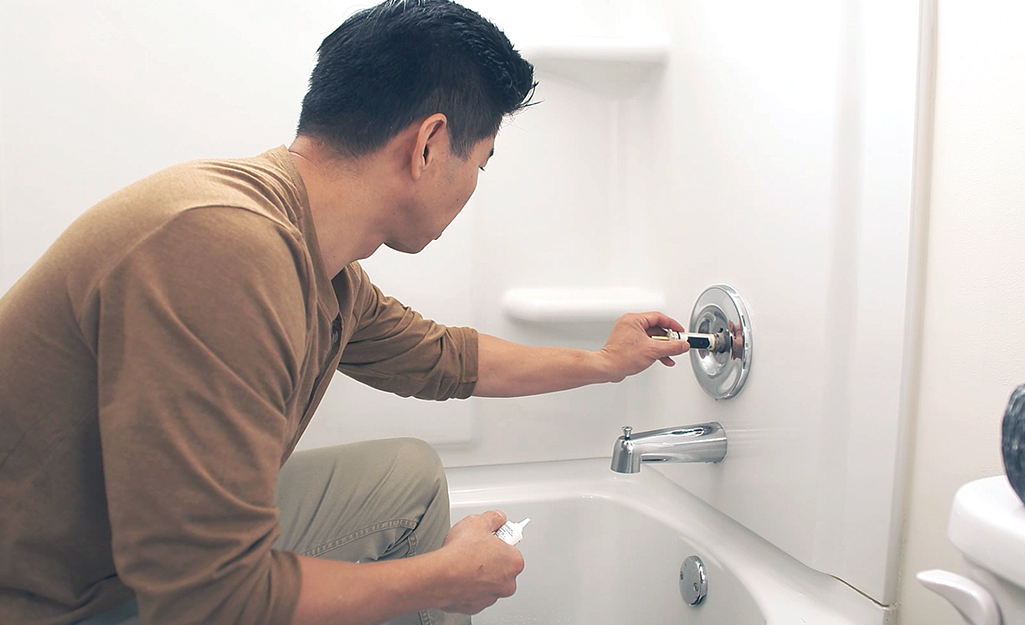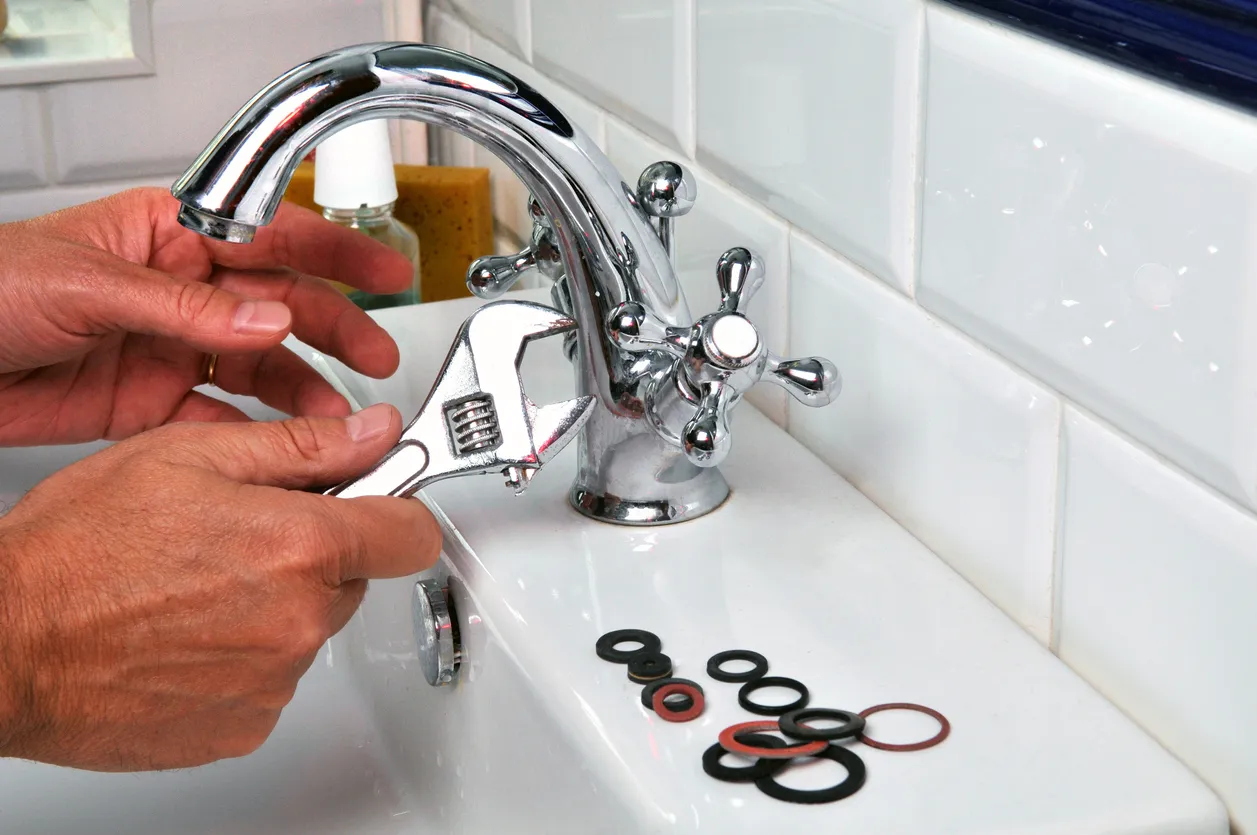Discovering the Value of Fixing a Faulty Faucet
Discovering the Value of Fixing a Faulty Faucet
Blog Article
The publisher is making several great points on Should I Repair or Replace a Leaky Faucet? in general in the content down the page.

Trickling faucets might appear like a small hassle, but their effect goes beyond simply the inconvenience of the noise. From drainage to incurring unneeded financial expenses and health and wellness risks, overlooking a dripping faucet can cause different effects. In this article, we'll delve into why it's important to resolve this typical family problem quickly and efficiently.
Waste of Water
Ecological Impact
Leaking faucets contribute substantially to water wastefulness. According to the Environmental Protection Agency (EPA), a solitary faucet dripping at one drip per second can squander more than 3,000 gallons of water per year. This not only pressures water resources however likewise influences ecological communities and wild animals based on them.
Step-by-Step Guide to Repairing a Dripping Tap
Devices Called for
Before attempting to repair a leaking tap, gather the necessary tools, including a flexible wrench, screwdrivers, replacement components (such as washing machines or cartridges), and plumber's tape.
Common Faucet Issues and Their Solutions
Identify the type of tap and the details problem causing the drip. Usual issues consist of worn-out washing machines, rusty shutoff seats, or malfunctioning O-rings. Refer to producer guidelines or on the internet tutorials for step-by-step advice on repair services.
Financial Costs
Raised Water Expenses
Past the environmental effect, dripping faucets can blow up water bills significantly. The accumulated waste with time translates into greater energy expenditures, which might have been stayed clear of with timely repair work.
Prospective Residential Or Commercial Property Damage
Additionally, long term trickling can lead to damage to fixtures and surface areas bordering the tap. Water buildup can trigger staining, rust, and even structural issues if left unattended, causing added repair service expenses.
Health and wellness Issues
Mold And Mildew and Mold Growth
The constant existence of moisture from a trickling tap creates a perfect setting for mold and mold development. These fungi not just compromise interior air quality yet also position wellness dangers, specifically for individuals with breathing conditions or allergies.
Waterborne Conditions
Stagnant water in leaking taps can become a breeding place for microorganisms and other microorganisms, boosting the threat of waterborne diseases. Contaminants such as Legionella germs prosper in stationary water, possibly leading to major illnesses when consumed or breathed in.
DIY vs. Expert Repair
Advantages and disadvantages of DIY Repair
While some might attempt to repair a leaking faucet themselves, DIY fixings include their very own set of difficulties. Without correct knowledge and tools, DIY attempts can exacerbate the concern or bring about incomplete repair work, extending the problem.
Advantages of Hiring a Specialist Plumber
Employing a professional plumber makes sure that the underlying cause of the leaking tap is attended to effectively. Plumbing professionals possess the experience and equipment to identify and repair faucet concerns successfully, saving time and reducing the danger of more damages.
Ecological Responsibility
Individual Contribution to Conservation
Taking obligation for taking care of leaking taps straightens with more comprehensive initiatives towards water preservation and ecological sustainability. Every individual's actions collectively make a significant influence on maintaining valuable resources.
Sustainable Living Practices
By focusing on prompt repairs and taking on water-saving routines, individuals add to lasting living practices that profit both existing and future generations.
Preventive Measures
Normal Maintenance Tips
To stop leaking faucets, do routine maintenance such as cleaning up aerators, inspecting for leakages, and replacing worn-out components quickly. In addition, consider setting up water-saving tools or upgrading to a lot more efficient components.
Importance of Prompt Repair Works
Resolving dripping faucets as quickly as they're seen prevents further water waste and prospective damages, ultimately saving both water and cash in the long run.
Effect On Building Worth
Assumption of Well-Maintained Residential Property
Keeping a residential or commercial property in good condition, including resolving maintenance issues like trickling taps, improves its viewed worth and desirability amongst prospective purchasers or occupants.
Influence on Resale Worth
Properties with properly maintained plumbing components, including taps, command higher resale worths in the real estate market. Addressing leaking taps can contribute to a favorable impression throughout home inspections and settlements.
Verdict
Dealing with a leaking tap goes beyond simple comfort; it's an essential step toward saving water, decreasing monetary prices, and guarding health and residential or commercial property. Whether with do it yourself repair services or expert help, doing something about it to deal with trickling taps is a little yet impactful method to promote responsible stewardship of resources and contribute to a much healthier, extra lasting future.
Most Common Reasons for a Leaky Faucet and How to Stop the Drip
Whether it’s your kitchen faucet leaking or a bathroom faucet leaking, one leaky faucet can waste anywhere from three to 30 gallons of water every single day. If the constant drip-drip-drip doesn’t get your attention, your water bill will. The good news is that, by following a few simple steps, chances are pretty good you can fix the problem yourself.
Why is it dripping?
Before you start taking things apart, let’s break down some of the most common causes of a leaky faucet.
Bad O-ring.
A cartridge is a valve that controls the flow of water into the faucet spout. On cartridge faucets there’s an O-ring—the little disc attached to the stem screw that holds the faucet handle in place. If it’s loose or worn-out, it can cause your sink handle to leak. Of course, the cartridge itself could be worn out. If that’s the case, make sure you replace it with the exact same kind.
Corroded valve seat.
The valve seat connects the faucet and the spout. If the leak seems to be coming from the spout, it might be because a buildup of water sediment has corroded the valve seat.
Worn-out washers or seals.
A leaky spout could be caused by a bad washer that rests against the valve seat. It’s just a matter of time before friction takes its toll. It could also be the wrong size washer or one that’s been installed incorrectly. Water sediments can also corrode inlet and outlet seals.
Water pressure.
If the faucet only drips now and then, or when you turn the handles a certain way, you should probably check your home’s water pressure.
Loose or broken parts.
The adjusting ring and packing nuts in the stream screw can become loose over time, causing your sink handle to leak. Try tightening or replacing the packing nut. If the leak is coming from the pipes underneath the sink, you probably have a broken pipe or fitting. If that’s the case, you should definitely call a plumber.
Know your faucet.
Faucets come in a variety of types. Each one has its own assembly—and its own possible causes of leaks. Learning about the four most common kinds of faucets will help you know how to take them apart and make any repairs.
How to stop a leaky faucet
Fixing that leaky faucet doesn’t have to take a lot of time, money, or expertise. It’s usually a simple matter of replacing a worn-out washer or gasket, a loose O ring, or another part. Chances are really good you can do this yourself if you follow these simple steps.
Shut off the water.
Before you tackle the faucet, cut off the water supply to the sink. There should be one valve for hot and one for cold. Hand-turn them clockwise with your hands till they close. If there are no valves under the sink, head to the basement and shut off the main water supply to the house. Then turn on the faucet until it empties out the water that’s still in the line and you’re ready to start. It’s a good idea to cover the sink drain with a plug or a rag so you don’t lose any small pieces and parts while you’re working.

As an avid reader on Why Are My Faucets Dripping (And Can I Fix It Myself)?, I figured sharing that piece of writing was really helpful. Enjoyed our write up? Please share it. Help others find it. Thanks a bunch for being here. Revisit us soon.
Report this page